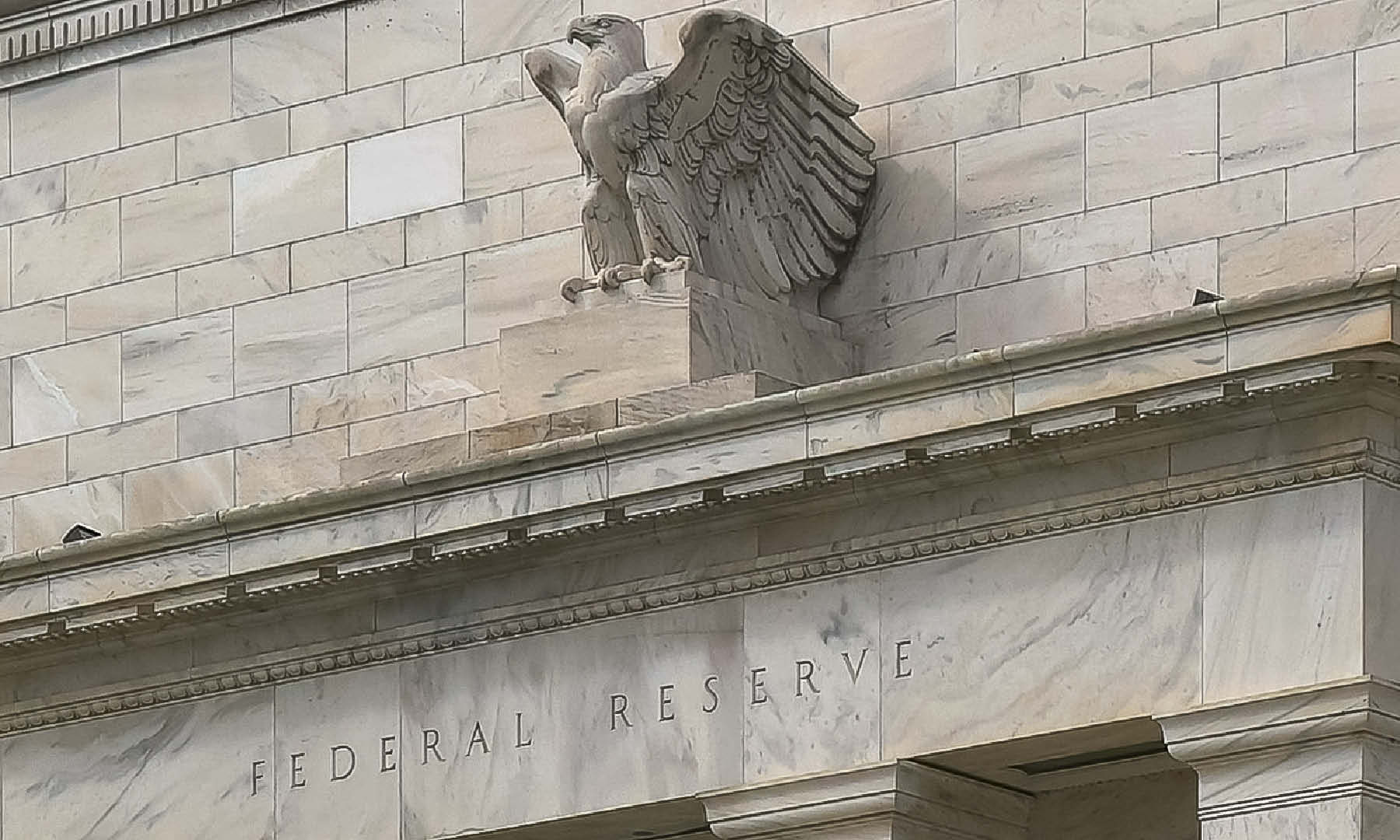2 min read
Where Does The Fed Go From Here?
 Don Davis, Senior Vice President, Senior Portfolio Manager Commerce Trust
:
May 10, 2023 7:00:00 AM
Don Davis, Senior Vice President, Senior Portfolio Manager Commerce Trust
:
May 10, 2023 7:00:00 AM

For more than a year, the Federal Reserve (Fed) has been waging a war against stubbornly high inflation, which has been raising the cost of living for Americans. The U.S. central bank’s strategy has been to tighten the money supply in the economy through a series of interest rates hikes designed to slow economic activity and eventually lower prices.
It’s a tightrope walk for the Fed. Tighten too little and keep inflation elevated for a longer time as it attempts to engineer a “soft landing” of the economy. Act too aggressively and risk pushing us into a recession, or a “hard landing.”
So, how did we get here, and where are we headed?
In the decade leading up to 2020, the Fed supported the U.S. economy by keeping interest rates incredibly low. This policy created a healthy U.S. money supply – the total sum of currency and other liquid assets flowing through the economy – and allowed businesses and consumers seeking credit easy access to it.
Then the COVID-19 pandemic and subsequent lockdowns hit in 2020. The U.S. economy whipsawed from a position of relative strength to a recession within the span of about 30 days.
At the onset of the pandemic, policymakers, including the Fed, pumped trillions of dollars into the system to buoy the economy. This fiscal medicine worked but with a significant side effect: too much stimulus that led to inflation, which started to rise in 2021.
By spring 2022, inflation rates surged to levels not seen in more than 40 years. The Fed’s response was to enact an aggressive strategy of raising its federal funds rate – the interest rate charged by the Fed to banks and other lending institutions on funds borrowed overnight. Since March 2022, the Fed has hiked interest rates 10 consecutive times, raising the federal funds target rate essentially from 0% to a range of 5.0% – 5.25% today.
.png?width=350&height=500&name=microsoftteams-image-(2).png)
Is it working? Unfortunately, it’s too early to tell. Inflation, as measured by the Consumer Price Index, moderated from its peak of 9.1% in June 2022, to 5.0% in March. An improvement, but still far higher than the Fed’s 2% inflation target range.
And there could be unintended consequences. It typically takes 12 months for the full effect of a single rate increase to work its way through the U.S. economy. Given the Fed has made 10 rate increases in just over a year, it will be some time for us to realize the full impact of this strategy.
Soft or Hard Landing?
One thing is certain: the economy is cooling. Activity in the manufacturing and service sectors, as measured by the Purchasing Manager’s Index, has contracted six straight months. Commodity prices have fallen on items like raw materials and oil.
The U.S. labor market has fluctuated some, though the unemployment rate remains around 3.5%. But keep this in mind: employment is a very coincident indicator to recessionary conditions. In other words, by the time jobs are declining significantly on a regular basis, it’s likely the economy is already in a recession.
After the latest increase in May, the Fed indicated it’s near the end of its rate hiking program. Commerce Trust believes the Fed will follow through on the pause and keep rates steady for the near term as the economic cycle plays out. Whether or not the Fed achieves a soft or hard landing is still in play. Stay tuned.
So, how did we get here, and where are we headed?
In the decade leading up to 2020, the Fed supported the U.S. economy by keeping interest rates incredibly low. This policy created a healthy U.S. money supply – the total sum of currency and other liquid assets flowing through the economy – and allowed businesses and consumers seeking credit easy access to it.
Then the COVID-19 pandemic and subsequent lockdowns hit in 2020. The U.S. economy whipsawed from a position of relative strength to a recession within the span of about 30 days.
At the onset of the pandemic, policymakers, including the Fed, pumped trillions of dollars into the system to buoy the economy. This fiscal medicine worked but with a significant side effect: too much stimulus that led to inflation, which started to rise in 2021.
By spring 2022, inflation rates surged to levels not seen in more than 40 years. The Fed’s response was to enact an aggressive strategy of raising its federal funds rate – the interest rate charged by the Fed to banks and other lending institutions on funds borrowed overnight. Since March 2022, the Fed has hiked interest rates 10 consecutive times, raising the federal funds target rate essentially from 0% to a range of 5.0% – 5.25% today.
.png?width=350&height=500&name=microsoftteams-image-(2).png)
Is it working? Unfortunately, it’s too early to tell. Inflation, as measured by the Consumer Price Index, moderated from its peak of 9.1% in June 2022, to 5.0% in March. An improvement, but still far higher than the Fed’s 2% inflation target range.
And there could be unintended consequences. It typically takes 12 months for the full effect of a single rate increase to work its way through the U.S. economy. Given the Fed has made 10 rate increases in just over a year, it will be some time for us to realize the full impact of this strategy.
Soft or Hard Landing?
One thing is certain: the economy is cooling. Activity in the manufacturing and service sectors, as measured by the Purchasing Manager’s Index, has contracted six straight months. Commodity prices have fallen on items like raw materials and oil.
The U.S. labor market has fluctuated some, though the unemployment rate remains around 3.5%. But keep this in mind: employment is a very coincident indicator to recessionary conditions. In other words, by the time jobs are declining significantly on a regular basis, it’s likely the economy is already in a recession.
After the latest increase in May, the Fed indicated it’s near the end of its rate hiking program. Commerce Trust believes the Fed will follow through on the pause and keep rates steady for the near term as the economic cycle plays out. Whether or not the Fed achieves a soft or hard landing is still in play. Stay tuned.
Download the Article
Past performance is no guarantee of future results, and the opinions and other information in the commentary are as of May 08, 2023. This summary is intended to provide general information only and is reflective of the opinions of Commerce Trust. This material is not a recommendation of any particular security, is not based on any particular financial situation or need and is not intended to replace the advice of a qualified attorney, tax advisor or investment professional.
Diversification does not guarantee a profit or protect against all risk. Commerce Trust does not provide tax advice or legal advice to customers. Consult a tax specialist regarding tax implications related to any product and specific financial situation. Data contained herein from third-party providers is obtained from what are considered reliable sources. However, its accuracy, completeness or reliability cannot be guaranteed.
Commerce Trust is a division of Commerce Bank.
Investment Products: Not FDIC Insured | May Lose Value | No Bank Guarantee
Past performance is no guarantee of future results, and the opinions and other information in the commentary are as of May 08, 2023. This summary is intended to provide general information only and is reflective of the opinions of Commerce Trust. This material is not a recommendation of any particular security, is not based on any particular financial situation or need and is not intended to replace the advice of a qualified attorney, tax advisor or investment professional.
Diversification does not guarantee a profit or protect against all risk. Commerce Trust does not provide tax advice or legal advice to customers. Consult a tax specialist regarding tax implications related to any product and specific financial situation. Data contained herein from third-party providers is obtained from what are considered reliable sources. However, its accuracy, completeness or reliability cannot be guaranteed.
Commerce Trust is a division of Commerce Bank.
Investment Products: Not FDIC Insured | May Lose Value | No Bank Guarantee
